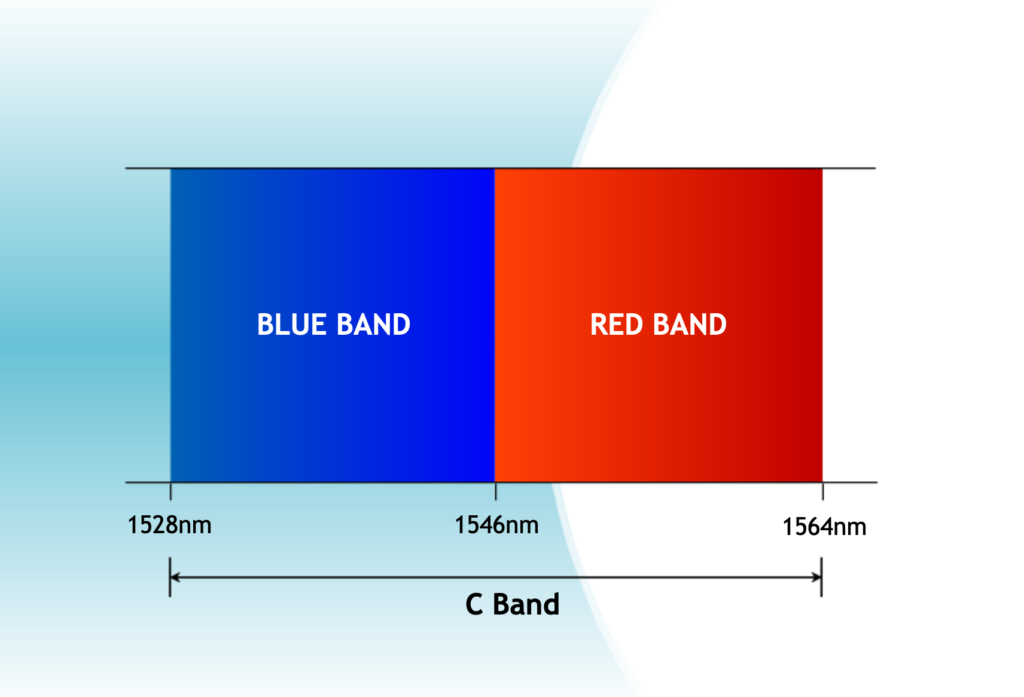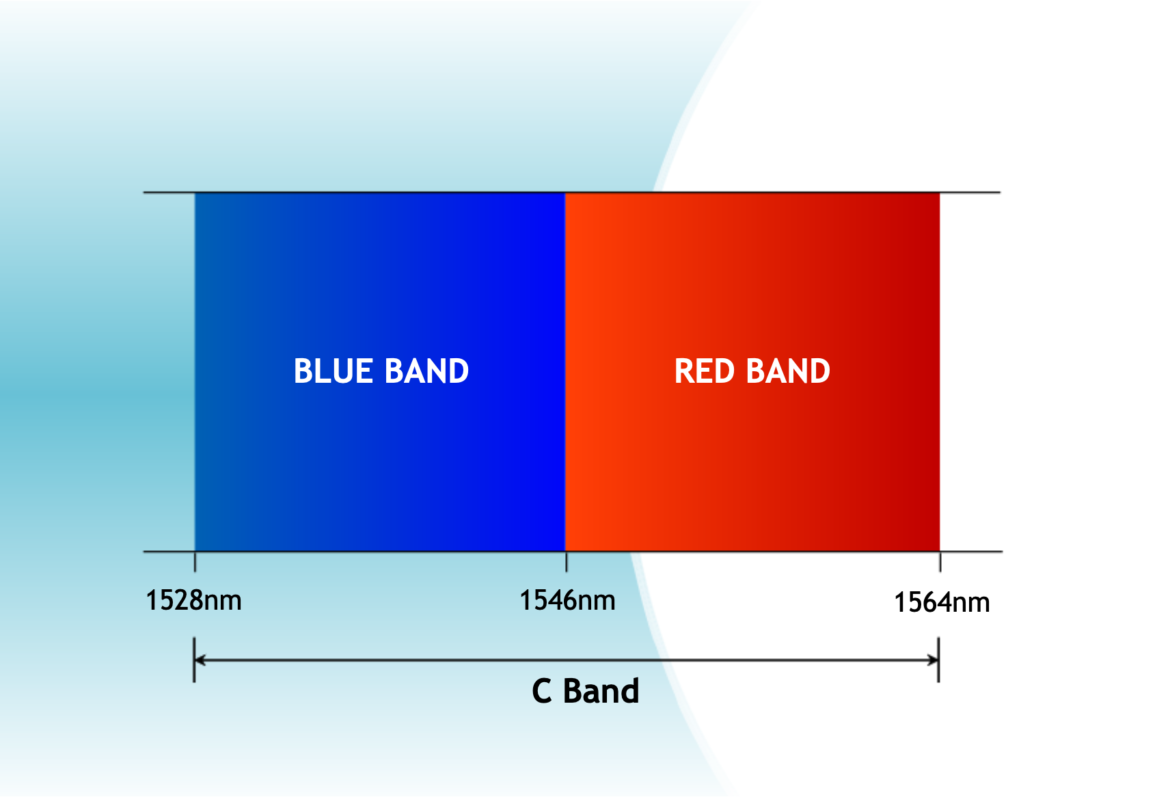The ITU approved DWDM band extends from 1528.77 nm to 1563.86 nm, and divides into the red band and the blue band.

The red band encompasses the longer wavelengths of 1546.12 nm and higher.
The blue band wavelengths fall below 1546.12 nm.
This division has a practical value because useful gain region of the lowest cast EDFAs corresponds to the red band wavelengths. Thus, if a system only requires a limited number of DWDM wavelengths using the red band wavelength yields the lowest overall system cost.
Regarding Red and Blue convention.
Its just a convention which is prevalent since electromagnetic spectrum is in study either it is Doppler effect or Rayleigh Scattering and later on it was taken into consideration in optics or photonics world.
(Taken from Wikipedia: Its more of talking light spectrum VIBGYOR where red-shift and blue-shift is discussed and “red-shift “ happens when light or other electromagnetic radiation from an object is increased in wavelength, or shifted to the red end of the spectrum.In general, whether or not the radiation is within the visible spectrum, “redder” means an increase in wavelength – equivalent to a lower frequency and a lower photon energy,A blueshift is any decrease in wavelength, with a corresponding increase in frequency, of an electromagnetic wave; the opposite effect is referred to as redshift. In visible light, this shifts the colour from the red end of the spectrum to the blue end.)
The ITU approved DWDM C-band extends from 1528.77 nm to 1563.86 nm, and divides into the red band and the blue band.
The red band encompasses the longer wavelengths of 1546.12 nm and higher.
The blue band wavelengths fall below 1546.12 nm.
Example to make it more clear:-
C Band: 1528.77 nm to 1563.86 nm
C-Blue 1529.44~1543.84
=====guardband====
C-red 1547.60~1561.53
L Band: 1565nm-1625nm
L-Blue: 1570nm-1584nm
=====guardband====
L-Red: 1589nm-1603nm
So, this blue and red shift is for characterisation behaviour study and to classify filters as well .

